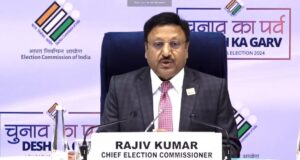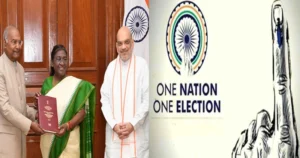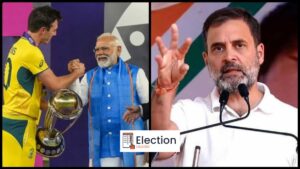Table of Contents
ToggleIntroduction:
Madhya Pradesh Congress
The Congress party has released its initial list of candidates for the upcoming state elections, which has heated up the political climate in Madhya Pradesh Congress. The party has made a calculated decision to combine Numerology with a focus on Youth in its candidate selection procedure.

This choice illustrates the party’s efforts to adapt to shifting political dynamics, reach a wider audience, and perhaps even gain an advantage in a state noted for its unpredictable political climate. In this essay, we’ll study some of the young leaders who will represent the Congress party, investigate the role of numerology in candidate selection, and consider the probable effects of this dual strategy on the electoral climate of Madhya Pradesh Congress.
Numerology in Politics:
Numerology, the idea that numbers have mystical meaning, has permeated many areas of life, including politics. To make judgments about election dates, candidate selection, and even campaign strategy, political leaders and parties frequently consult numerologists in India. This approach stems from the notion that statistics have the power to affect how things turn out, including elections.
The Congress party’s decision to use numerology in the selection of candidates for the elections in Madhya Pradesh demonstrates their openness to trying out novel approaches. In this situation, numerology entails looking up probable candidates’ names and birthdates to find numbers that are deemed lucky and harmonious. These figures are thought to increase the contenders’ chances of winning.
Numerology is frequently employed in politics to choose lucky dates for speeches, rallies, and even the submission of nomination papers. It is thought that holding big political events on these days can benefit the candidates and their campaigns by bringing luck and energizing them.
In addition to choosing lucky numbers, candidates’ names can also be included. Numerologists frequently advise making minor changes to names to make sure they resonate with good numbers. This method is thought to improve a candidate’s overall fortune and chances in the election.
Youthful Representation:
The inclusion of young leaders on the Congress party’s candidate list is one of its main priorities. The party is eager to engage with this group as there are many young people in Madhya Pradesh Congress. intends to appeal to the aspirations, vigor, and issues of the younger generation by nominating youthful candidates. Furthermore, Young Leaders may frequently infuse politics with new ideas, dynamism, and perspectives that challenge the current quo and offer fresh approaches to age-old issues.

These candidates were chosen in a different manner from the state’s customary politics, which frequently favored seasoned figures. It is evident that Congress understands the importance of having fresh faces and voices in the political sphere. In addition to representing the party’s objectives, these young candidates are anticipated to speak for the hopes of the state’s youth.
Politics have historically been dominated by older, more seasoned politicians in Madhya Pradesh as well as many other regions of India. As the state attempts to adjust to the changing needs and wants of its citizens, the emergence of these young candidates shows a shifting dynamic in the political landscape of the state. The Congress party seeks to close the gap between the political elite and the ambitions of the younger generation by placing a high priority on the participation of young leaders.
Young Leaders on the List:
There are several young leaders on the Madhya Pradesh Congress candidate list who have distinguished themselves by their dedication to the party and hard work. These politicians have shown that they can relate to the voters, and they have the capacity to inject new life and vigor into the state’s political system.
Lawyer Sachin Choudhary: age 34, has been involved in politics for more than ten years. He was able to connect with the young people because to his early entry into politics, and he is well-known for his passionate speeches and original ideas. The voters are anticipated to support Sachin’s candidacy because he is running from a district with a sizable youth population.
Kavita Yadav: At 29 years old, Kavita Yadav symbolizes the evolving nature of politics in Madhya Pradesh Congress. She provides a new viewpoint to the party’s ticket with her experience in social work and significant Emphasis on women’s concerns. Her appointment demonstrates Congress’ dedication to advancing women in politics and addressing issues relating to gender.
Rahul Meena: an engineer who is 32 years old, is regarded as a technocrat who is capable of handling problems with infrastructure and development. He will likely win over educated urban young who frequently call for a more data-driven and goal-oriented approach to governance.
Along with other names on the list, these young leaders represent the Congress party’s desire to engage with youth groups in the state. Their varied experiences and skills support the party’s approach to winning over a wide range of voters.
Impact on the Electoral Landscape:
The Congress Party’s combined tactic of including numerology and emphasizing young in its candidate list may significantly affect Madhya Pradesh’s political climate. First, despite being unconventional, using numerology may be appealing to a segment of the electorate that adheres to such views. It might serve to surround the selected candidates with a positive and lucky atmosphere, thereby swaying voters who think numbers have power.
Voters’ impressions of the party’s commitment to innovation and unusual strategies may be impacted by their belief in numerology. The Congress party’s use of numerology may be interpreted as an effort to break free from the usual mold in a period where politics is becoming more and more impacted by social media, branding, and innovative campaign techniques.
Second, by putting a focus on youth the Congress Party may be able to appeal to the state’s younger population’s aspirations for greater representation and a bigger say in politics. These young candidates may be able to swing the electorate in favor of the Congress party if they are able to articulate their ideas clearly and make an emotional connection with voters.
Youth in the state are frequently in the vanguard of the movement calling for improved educational opportunities, job prospects, and sustainable development. The young leaders the Congress party has put up are anticipated to channel these hopes and worries, providing the party an advantage in the election.
Conclusion:
The candidates on the Madhya Pradesh Congress list who are heavily influenced by numerology and youth, demonstrate the party’s openness to change and innovation in its quest for electoral triumph. The party wants to use the power of numbers to its advantage by embracing numerology and by emphasizing youth, it hopes to appeal to the youthful aspirations of the state’s younger population. Whether this dual approach will be successful in the approaching elections remains to be seen, but there is no doubt that it gives Madhya Pradesh’s political debate a fresh perspective.
The political fortunes of the candidates on the Congress party’s first list will be widely monitored as the campaigns heat up and election day approaches and it will become clear whether they have the power to change the political landscape of the state. This innovative strategy might just be the winning recipe the Congress party needs to make its imprint in Madhya Pradesh once more in a state noted for its political unpredictability.






